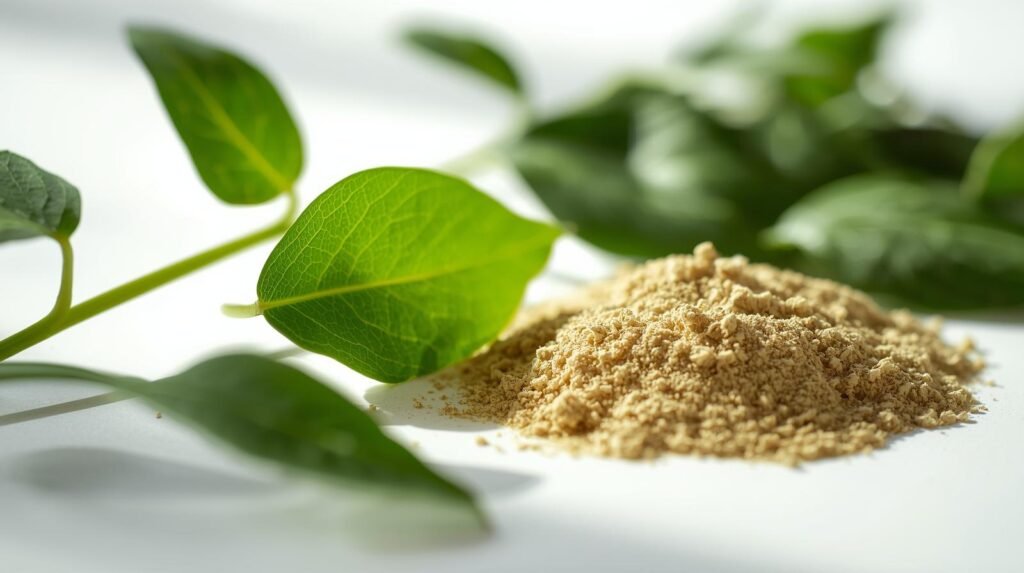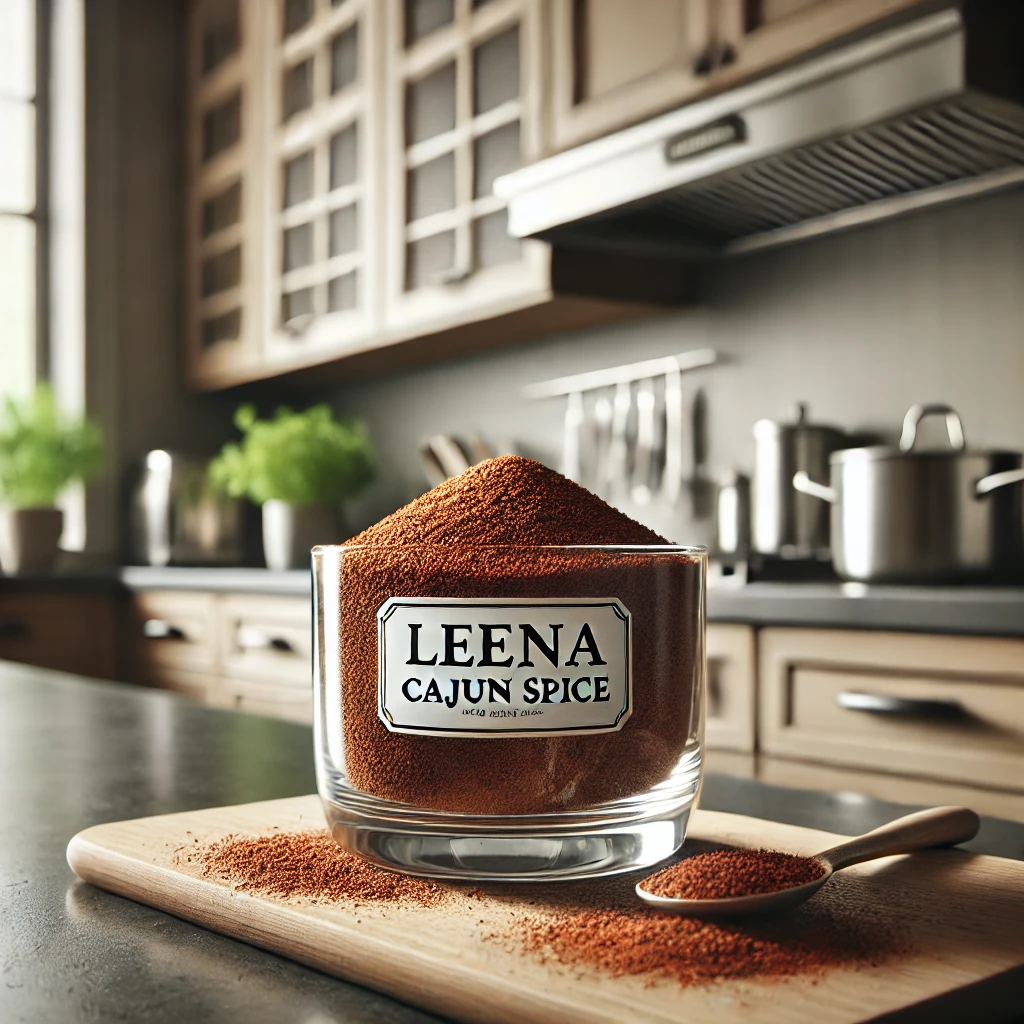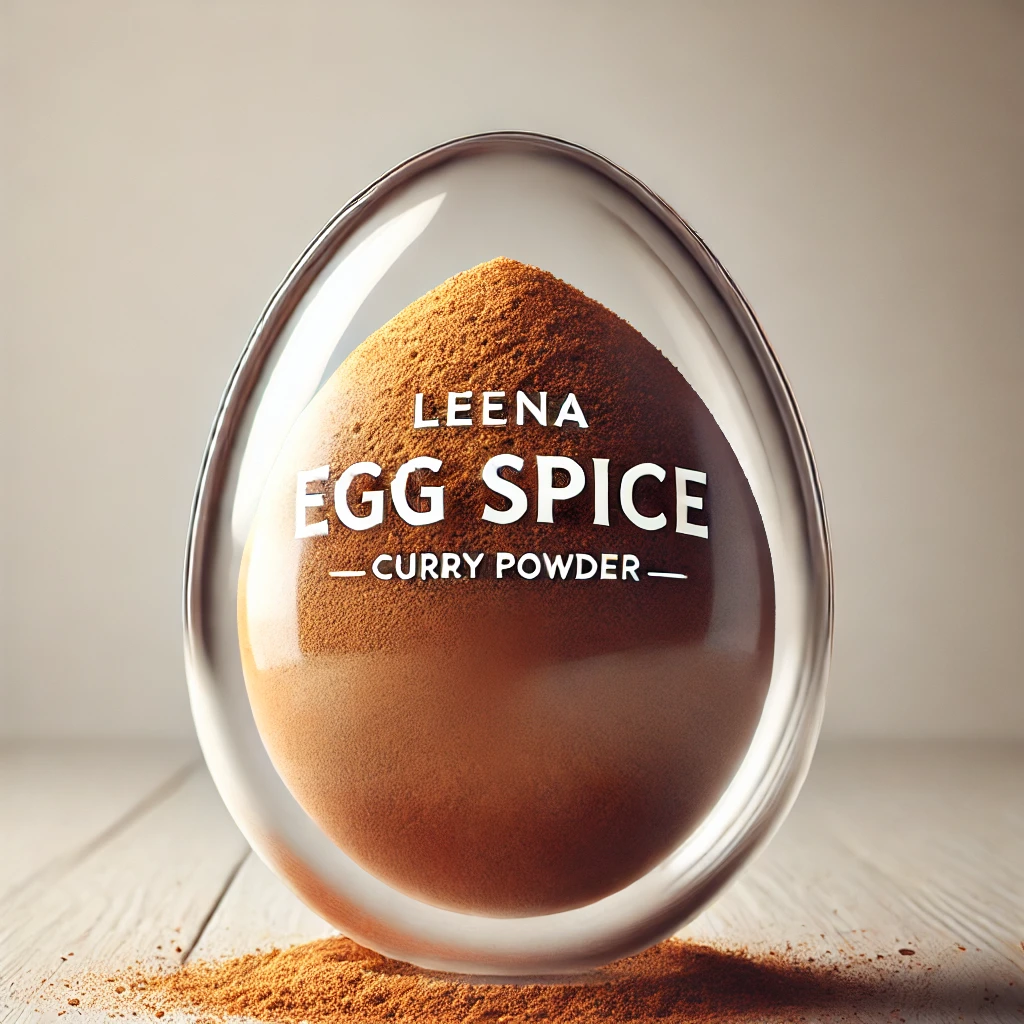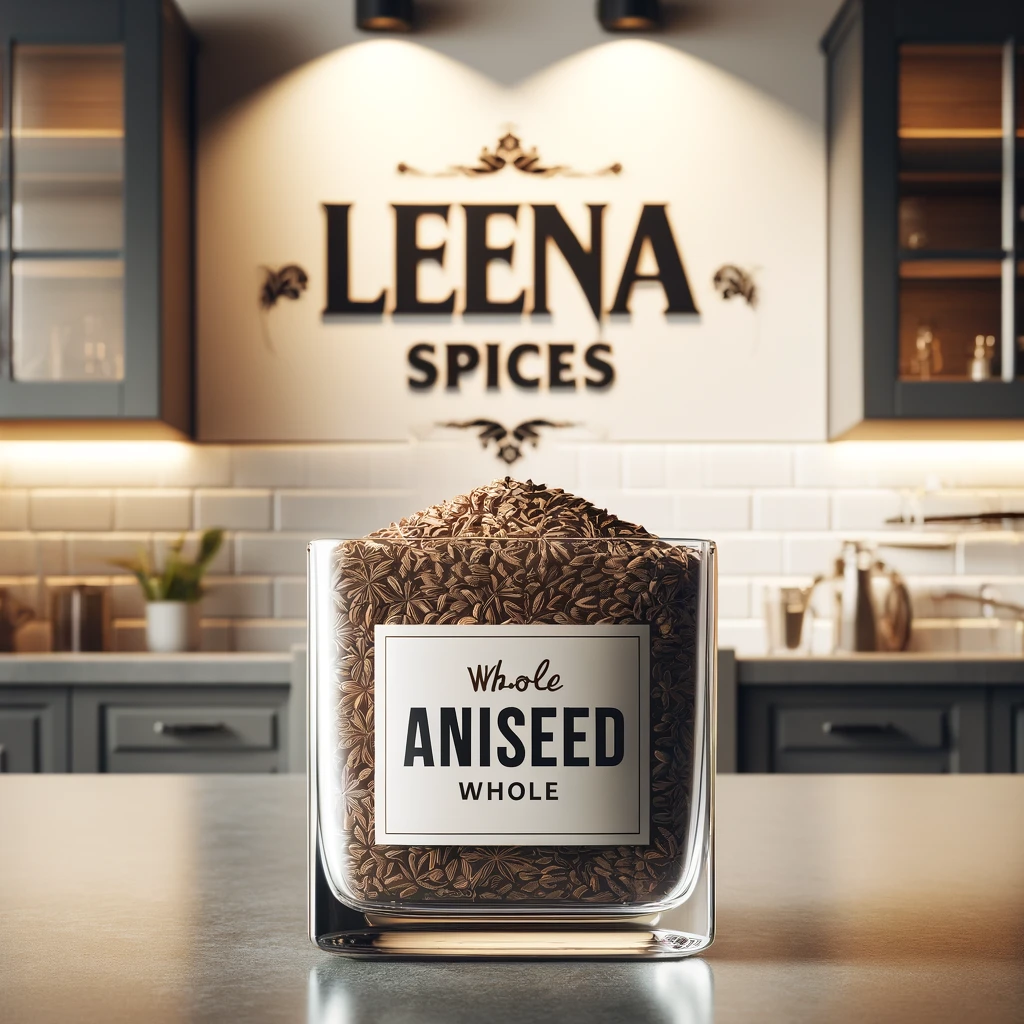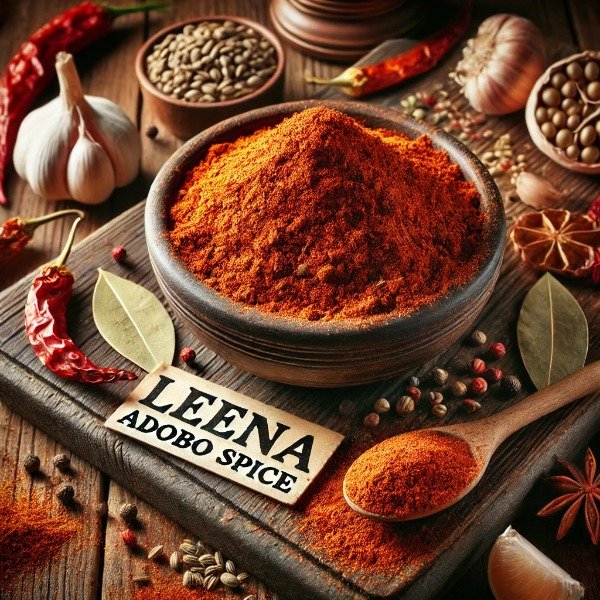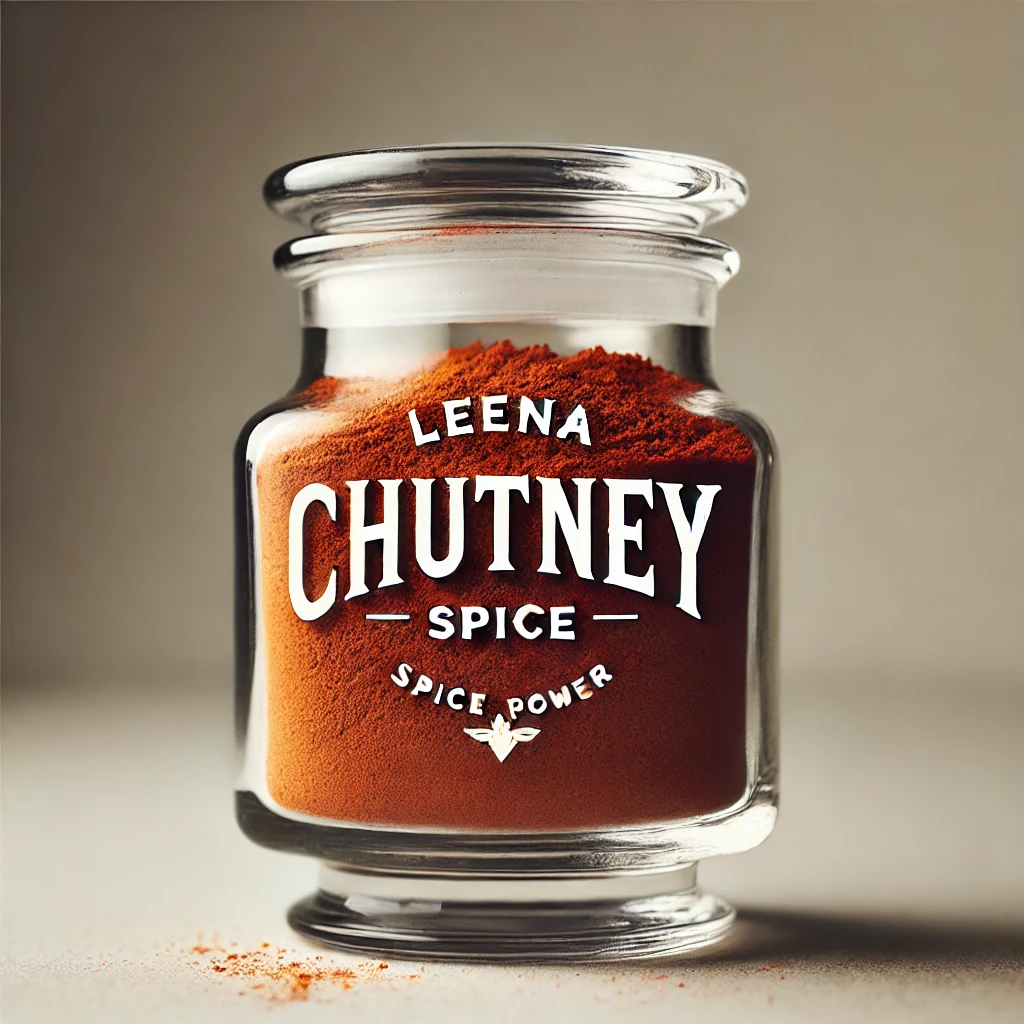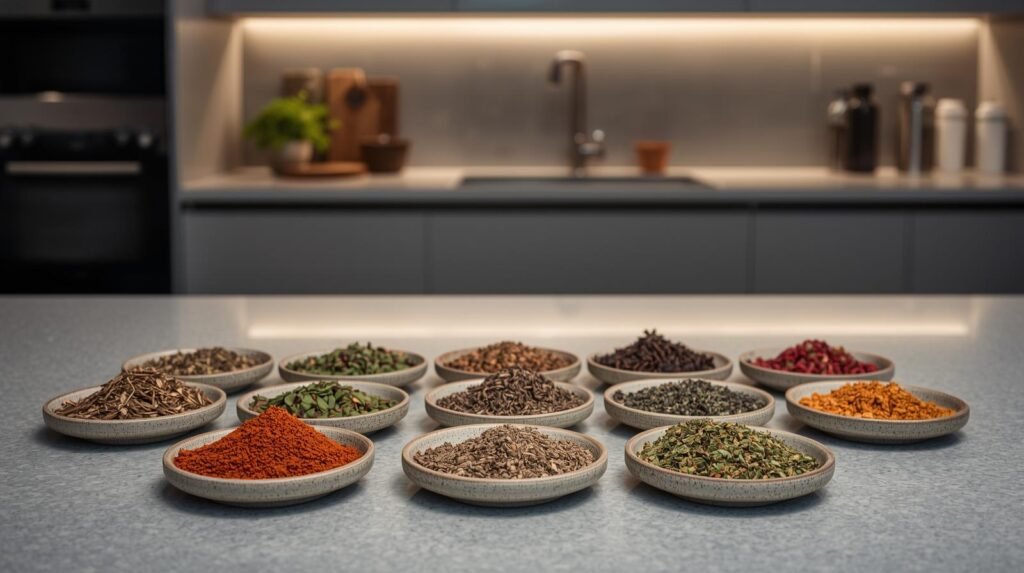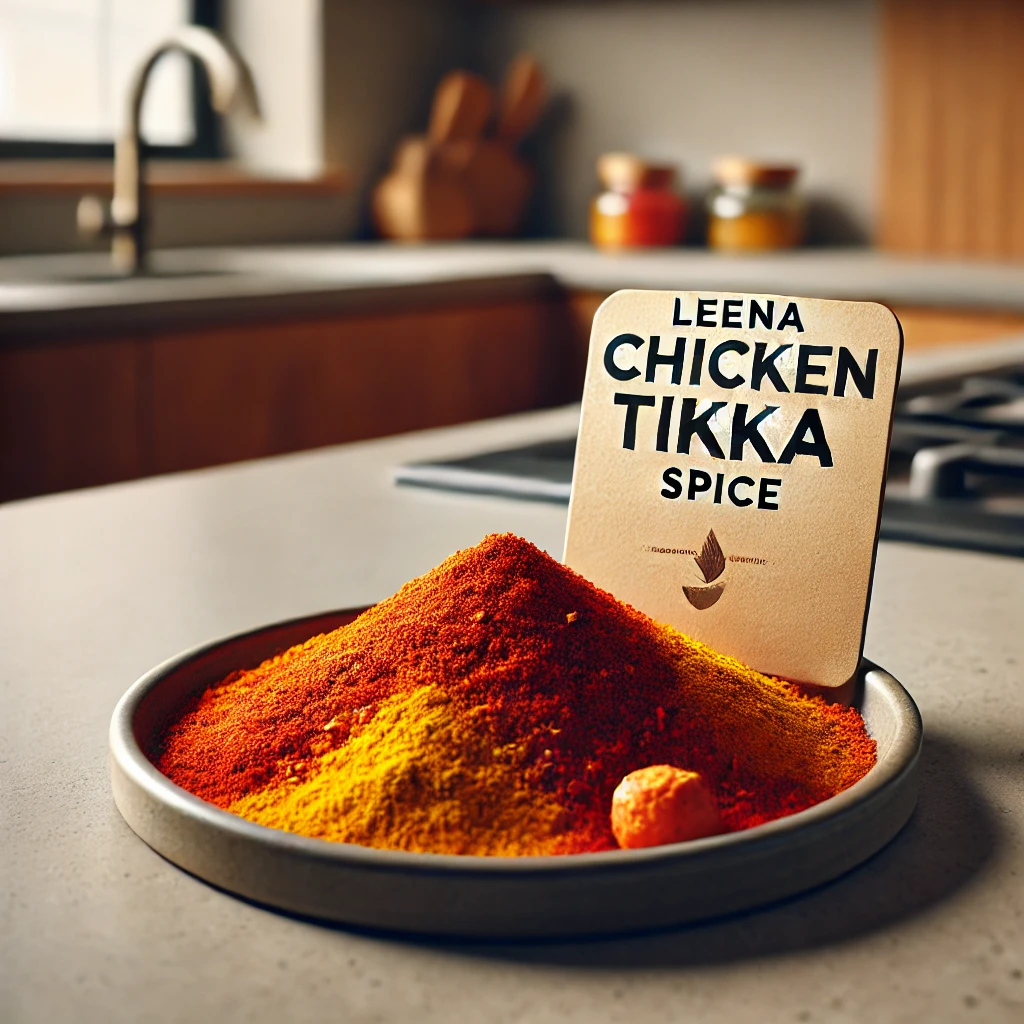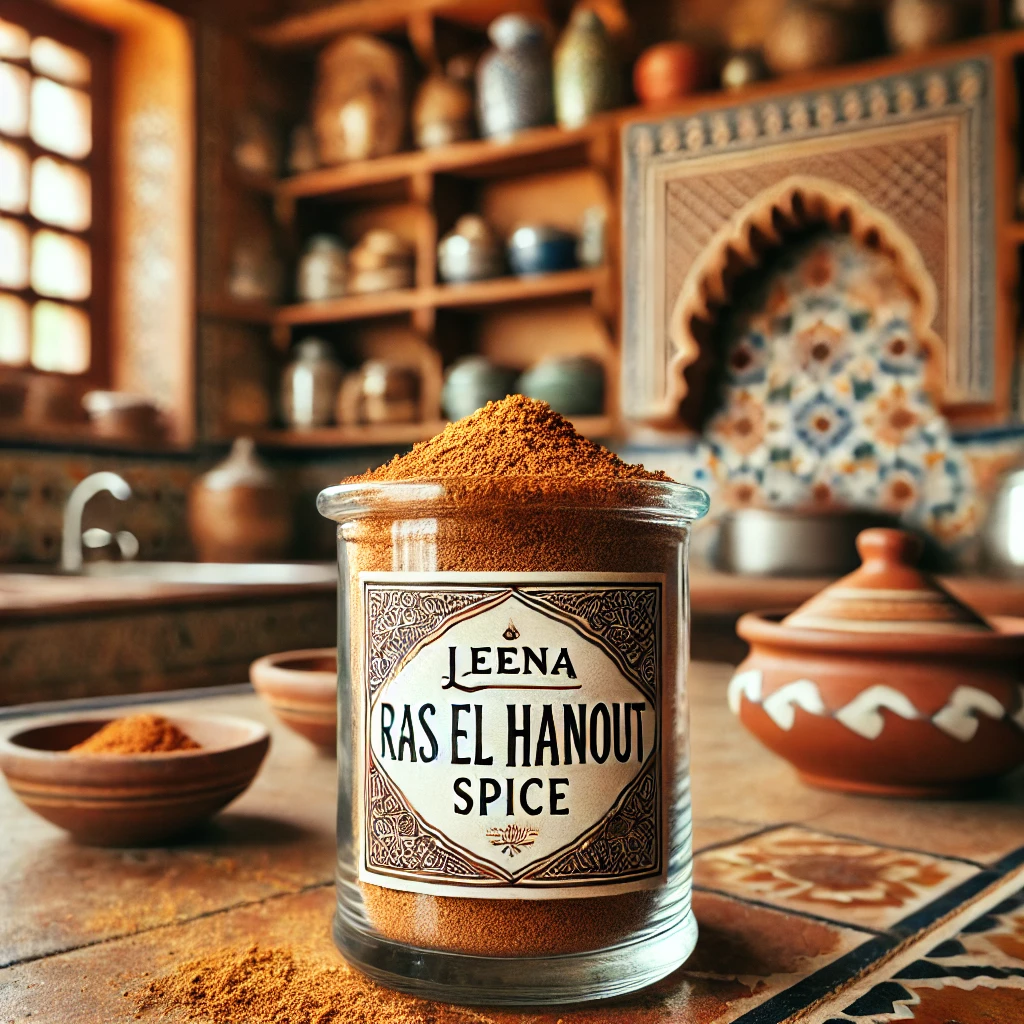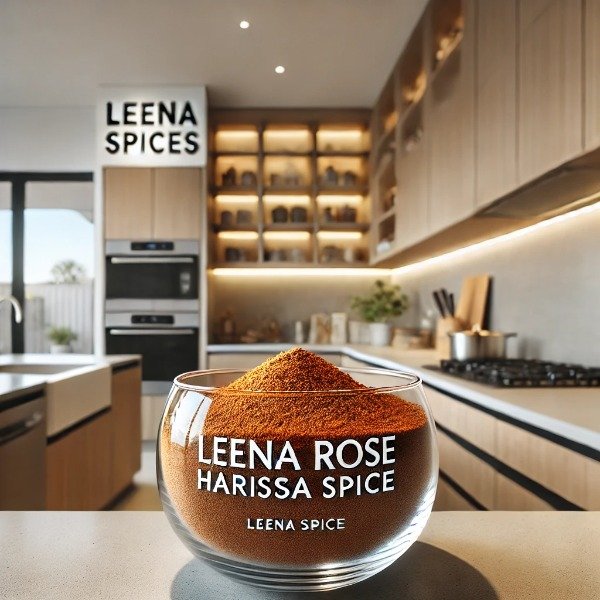Authentic Afghani Chicken Recipe with Homemade Spice Blend
Table of Contents
- Key Takeaways: Afghani Chicken Essentials
- What is Afghani Chicken?
- Is Afghani Chicken Authentic Afghan or Indo-Afghan Fusion?
- Must-Have Spices for an Authentic Afghani Blend
- How to Make the Afghani Spice Blend
- Afghani Chicken Recipe
- Infusing Afghani Chicken with Charcoal Smoke (Dhungar Method)
- Preventing the Yoghurt Marinade from Curdling
- Substitutions Guide for Cashews, Kasuri Methi, and Cream
- Beyond Chicken: Creative Uses for Afghani Spice Blend
- What to Serve with Afghani Chicken
- FAQs
Key Takeaways: Afghani Chicken Essentials
What makes Afghani Chicken unique?
Afghani Chicken is a creamy, aromatic, and mildly spiced dish with roots in Indo-Afghan fusion cuisine. Unlike fiery curries, it focuses on aroma and richness, often using yogurt, cream, and nut pastes in the marinade.
Is Afghani Chicken authentic to Afghanistan?
Not exactly. While inspired by Afghan culinary traditions and Mughlai influences, this dish is largely a North Indian adaptation designed to suit Indian, UK, and Pacific palates. It blends Afghan dairy-based cooking with Indian spices and tandoori or grilled techniques.
What are the must-have spices?
The signature Afghani spice blend includes cardamom, cloves, cinnamon, cumin, coriander, fenugreek leaves, garam masala, garlic powder, ginger powder, dried lemon, paprika, white pepper, poppy seeds, turmeric, and onion powder. These create warmth and aroma without overpowering heat.
How is the creamy marinade made?
The marinade combines full-fat yogurt, fresh cream, cashew or almond paste, and ginger-garlic paste, creating a smooth, rich coating that prevents curdling and enhances tenderness.
How do you achieve the signature smoky flavor?
Use the Dhungar (charcoal smoke) method after cooking. A small piece of red-hot natural charcoal, placed in the chicken vessel with ghee, infuses the dish with smoky aroma reminiscent of tandoori cooking.
What are the best accompaniments?
Pair Afghani Chicken with naan, Jeera rice, kachumber salad, cucumber raita, mint-coriander chutney, and lemon wedges. Traditional Afghan sides like Borani Banjan or Aush, plus beverages like lassi or chaas, complete the meal.
Can the spice blend be used beyond chicken?
Yes! Use it with paneer, tofu, fish, lamb, roasted vegetables, rice dishes, lentil stews, and creamy dips. Its aromatic profile is versatile and elevates a wide range of dishes.
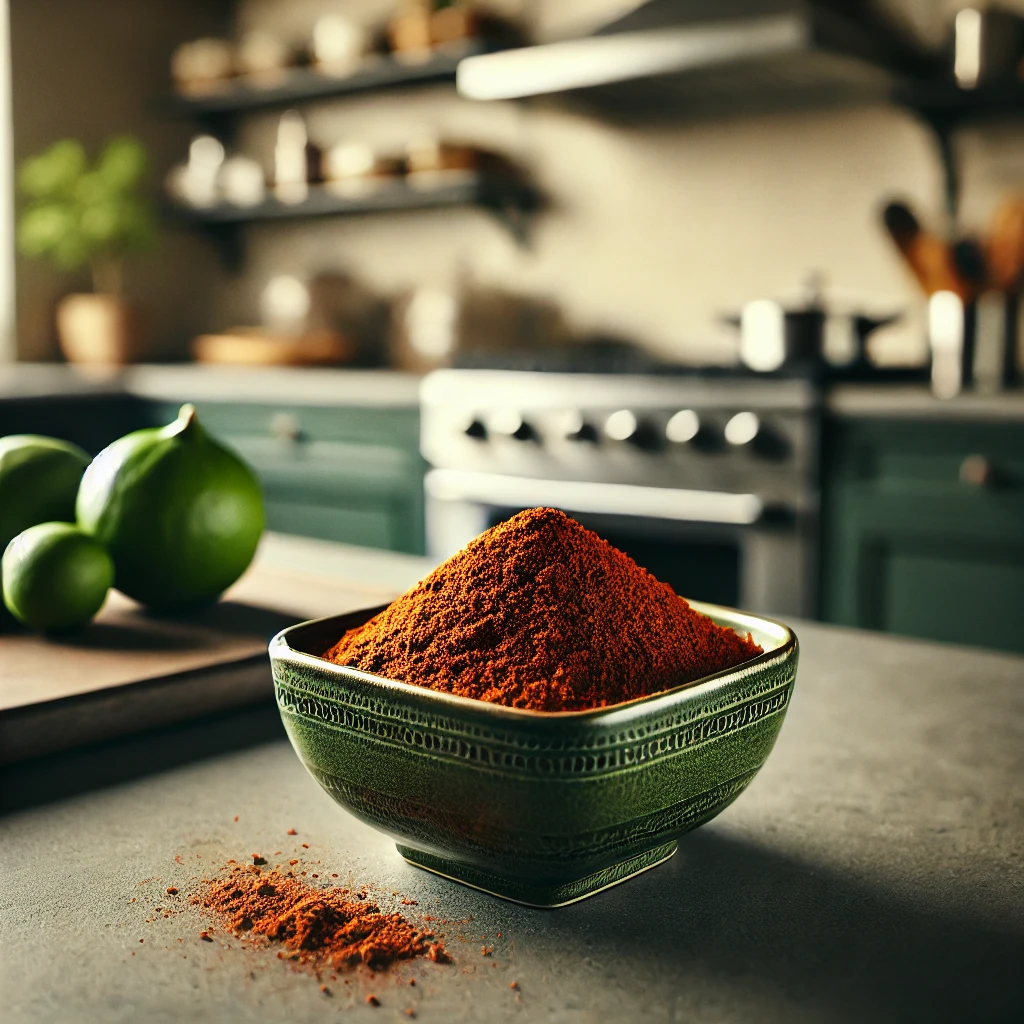
What Is the Authentic Afghani Chicken Spice Blend?
The term “Afghani Chicken”, often heard across New Zealand and the Pacific, describes a creamy, aromatic, and mildly spiced chicken dish that beautifully blends Afghan and Indian culinary traditions. Unlike the fiery red curries of India, Afghani Chicken celebrates warmth, depth, and fragrance over heat.
The Essence of the “White” or Creamy Marinade
What makes Afghani Chicken truly special isn’t just the spice mix—it’s how those spices are blended into a rich, velvety marinade. This creamy base gives the dish its signature soft white or pale golden hue, subtle aroma, and melt-in-the-mouth texture.
Here’s what defines it:
- Dairy Foundation: A combination of yoghurt (curd) and fresh cream forms the smooth, luxurious base.
- Aromatic Boosters: Ginger-garlic paste, green chillies, and fresh coriander or mint infuse freshness and lift the flavours without overpowering heat.
- Nut-Based Richness: Cashew or almond paste adds body, a hint of sweetness, and prevents the yoghurt from curdling during cooking.
The Signature Spice Character
The authentic Afghani Chicken spice blend focuses on aroma, balance, and warmth rather than spiciness. It typically combines mild spices like cardamom, white pepper, cumin, coriander, and a touch of nutmeg or mace—creating a delicate fragrance that complements the creamy marinade.
When these spices meet the yoghurt-nut mixture, the result is a luxurious, mellow dish that feels comforting yet refined. This is what gives Afghani Chicken its distinct identity—a dish that is gentle in spice but rich in character, ideal for those who love flavour without the burn.
Is Afghani Chicken Actually from Afghanistan, or an Indo-Afghan Fusion?
The Mughal Connection
To understand Afghani Chicken, you need to go back to the royal kitchens of the Mughal Empire. The Mughals, who ruled much of India and traced their ancestry to Central Asia (including regions of modern-day Afghanistan), transformed Indian cuisine by introducing Persian-inspired culinary techniques—slow cooking, nut-based gravies, and the elegant use of dairy and dried fruits.
This influence gave rise to Mughlai cuisine—a rich and subtle style of cooking that prized aroma and texture over heat. Afghani Chicken clearly draws from this tradition. Its yoghurt-and-cream marinade, cashew or almond paste, and gentle spicing reflect the same royal preference for luxurious yet balanced flavours.
The Evolution into Indo-Afghan Fusion
The version of Afghani Chicken we know today likely emerged in North India—especially Delhi—during the mid-20th century. Afghan and Pashtun communities had settled there for centuries, bringing their love of smoky kebabs and dairy-based marinades. Indian chefs adapted these ideas, blending them with tandoori-style cooking, garam masala, and mild Mughlai flavours.
Over time, this creamy, “white” chicken preparation became a popular alternative to the bright-red, spicy tandoori dishes that dominated restaurant menus. To appeal to broader palates, especially in India, the UK, and later the Pacific, chefs reduced the heat and emphasised the buttery richness that diners now associate with Afghani Chicken.
Afghan vs. Indo-Afghan: What’s the Difference?
While authentic Afghan cuisine is known for its subtle spicing, kebabs, and rice dishes like Kabuli Pulao, you won’t often find the restaurant-style “Afghani Chicken” in Afghanistan itself. The dish is a creative Indian interpretation inspired by Afghan techniques but not a direct part of traditional Afghan cooking.
Indian elements include:
- The yoghurt-based marinade enriched with cream or cashews
- The aromatic use of garam masala, cumin, and cardamom
- Tandoori grilling or baking, often finished with butter or cream
- The smooth, lightly gravied presentation popular in Indian restaurants
Afghan influences appear in:
- The name and inspiration, drawn from Afghan culinary traditions
- The use of dairy and gentle spices rather than chili heat
- The smoky, grilled cooking style that echoes Afghan kebabs
The Takeaway
So, is Afghani Chicken truly from Afghanistan?
Not exactly. It’s an Indian-born dish with Afghan roots, shaped by centuries of culinary exchange through the Mughal Empire. Think of it as a bridge between Central Asian warmth and North Indian richness—a creamy, smoky celebration of two intertwined food cultures.
What Are the Must-Have Spices for an Authentic Afghani Blend?
Creating a truly authentic Afghani Chicken spice blend is all about balance — aroma, warmth, and subtle depth, rather than intense heat. Unlike fiery curries, this blend celebrates gentle spices that infuse the dish with fragrance and creaminess.
Here are the essential spices that form the heart of a traditional Afghani blend:
- Cardamom: Adds a sweet, floral aroma that defines the dish’s delicate fragrance.
- Cilantro (Coriander leaves or seeds): Brings a light citrusy note that brightens the flavour.
- Cinnamon: Offers warmth and a faint hint of sweetness.
- Cloves: Introduce a touch of depth and richness.
- Coriander: A foundation spice that enhances balance and body.
- Cumin: Earthy and nutty, grounding the creamy base with savoury warmth.
- Fenugreek leaves: Add a subtle, herbal bitterness that balances the dairy’s richness.
- Garam Masala: A finishing blend that ties all the spices together.
- Garlic Powder: Reinforces savoury notes when paired with fresh garlic paste.
- Ginger Powder: Adds warmth and gentle sharpness.
- Dried Lemon (Loomi): Gives a faint tang that cuts through the creaminess.
- Onion Powder: Enhances the umami body of the blend.
- Paprika: Lends a soft colour and mild smokiness without overpowering heat.
- White Pepper: Adds gentle spiciness and a refined, peppery aroma.
- Poppy Seeds: Contribute texture and a nutty undertone.
- Turmeric: Brings a golden hue and earthy aroma, used sparingly for subtle colour.
The Creamy Secret: More Than Just Spices
The spice blend itself is only half the story. The authentic Afghani flavour truly comes alive when these dry spices are whisked into a creamy, nut-based marinade. To achieve the perfect texture and taste, combine your spice mix with these three essential non-spice components:
- Richness: Use fresh cream and thick, full-fat yoghurt as the base. They add smoothness and depth.
- Aromatics: Blend fresh ginger and garlic paste in equal parts to create the signature aroma.
- Thickener: Add a silky cashew or blanched almond paste. It prevents curdling when heated and gives the dish its signature creamy texture.
Together, these ingredients create the iconic Afghani Chicken experience — a dish that’s mild, aromatic, and luxuriously smooth, where each spice complements the dairy-rich base instead of overpowering it.
How to Make the Authentic Afghani Chicken Spice Blend
Ingredients You’ll Need
Measure out the following spices for one medium jar (about 100 grams total):- Cardamom – 6g
- Cilantro (Coriander leaves or seeds) – 3g
- Cinnamon – 3g
- Cloves – 3g
- Coriander – 6g
- Cumin – 24g
- Fenugreek leaves – 3g
- Garam Masala – 3g
- Garlic Powder – 3g
- Ginger Powder – 3g
- Dried Lemon (Loomi) – 3g
- Onion Powder – 3g
- Paprika – 12g
- White Pepper – 3g
- Poppy Seeds – 10g
- Turmeric – 12g
Step-by-Step Method
- Toast the Whole Spices (Optional but Recommended) Lightly dry-roast the cumin, coriander, cinnamon, cloves, and cardamom in a pan over low heat for 1–2 minutes. This releases their natural oils and intensifies the aroma. Let them cool completely before grinding.
- Grind to a Fine Powder Transfer the cooled spices to a spice grinder or mortar and pestle. Grind until you achieve a fine, smooth texture.
- Combine the Ground Spices Mix the freshly ground spices with the pre-powdered ingredients — garlic powder, ginger powder, turmeric, onion powder, paprika, and garam masala.
- Add the Finishing Touches Stir in fenugreek leaves, poppy seeds, and dried lemon powder. Mix well until evenly combined.
- Store for Freshness Transfer your blend to an airtight glass jar. Store it in a cool, dark, and dry place, away from humidity and sunlight — especially important in New Zealand’s changing coastal climate. Properly stored, the blend will stay aromatic for up to six months.
Pro Tip:
For an even creamier Afghani flavour, mix 2 tablespoons of this spice blend with:- ½ cup of thick yoghurt
- 2 tablespoons of cashew paste or cream
- 1 tablespoon of fresh ginger-garlic paste
How to Make the Authentic Afghani Chicken Spice Blend
If you love creamy, smoky, and mildly spiced dishes, this Afghani Chicken recipe is a must-try. It’s rich yet light, aromatic yet soothing and a perfect balance that defines the Indo-Afghan fusion cuisine. Best of all, it’s quick to prepare and ideal for weekend barbecues or cozy home dinners.
Ingredients
- 500g chicken pieces (bone-in or boneless, as preferred)
- 2 tbsp cashew paste (or substitute with blanched almond paste)
- 2 tbsp fresh cream
- 1 ½ tsp Afghani spice blend (see recipe above)
- 2 tbsp thick yoghurt
- ½ tsp lemon juice
- Salt to taste
Method
- Preheat the Grill
Heat your charcoal grill, barbecue, or oven grill until hot. The smoky heat helps bring out the signature Afghani flavour. - Prepare the Marinade
In a mixing bowl, combine yoghurt, cream, cashew paste, lemon juice, salt, and the Afghani spice blend. Stir well until smooth and creamy. - Marinate the Chicken
Add the chicken pieces to the mixture, ensuring they are evenly coated on all sides. Cover the bowl and refrigerate for at least 30 minutes (for deeper flavour, you can marinate for up to 4 hours). - Grill to Perfection
Place the marinated chicken pieces on the preheated grill. Cook, turning occasionally, until the chicken is tender, lightly charred, and fully cooked through. This usually takes about 10–15 minutes, depending on the size of the pieces. - Serve and Enjoy
Arrange the chicken on a platter and serve hot with mint chutney, naan, or soft parathas. A side of sliced onions and a squeeze of lemon adds the perfect finishing touch.
Optional Twist for Home Cooks
- Pan-Fry Method: If you don’t have a grill, pan-fry the chicken over medium heat in a little butter or oil until golden and cooked through.
- Smoky Finish: For authentic restaurant-style aroma, place a small piece of hot charcoal in a bowl, set it over the cooked chicken, drizzle a drop of ghee on it, and cover the dish for a minute to infuse the smoky flavour.
Serving Suggestion
Pair your Afghani Chicken with jeera rice, butter naan, or a fresh cucumber raita. The combination of creamy texture, mild spice, and subtle smokiness makes it a crowd favourite for family gatherings and summer barbecues across New Zealand and beyond.
Can I Buy Afghani Chicken Spice Blend From Amazon?
Yes you can buy spice blends that are marketed for “Afghani Chicken” style dishes on Amazon.
How to Infuse Afghani Chicken with Charcoal Smoke?
What Is the Dhungar Method?
The Dhungar technique (from the Hindi word dhuaan, meaning “smoke”) is a traditional method used across North India and Afghanistan-inspired cuisines to infuse cooked dishes with natural charcoal smoke. It doesn’t require any special equipment — just a small piece of natural charcoal, some ghee, and a lid that seals well.The 4-Step Dhungar Process
Step 1: Ignite the Charcoal
- Use natural charcoal (avoid quick-lighting briquettes, as they contain chemicals).
- Place a small piece — about the size of a golf ball — directly over a gas flame or electric coil.
- Heat until it turns red-hot on all sides (this takes roughly 5–7 minutes).
- Safety Tip: Always handle hot charcoal with metal tongs and ensure your kitchen is well-ventilated.
Step 2: Prepare the Chicken Dish
- Once your Afghani Chicken is fully cooked — grilled, roasted, or pan-fried — transfer it into a heavy-bottomed pot or serving bowl with a tight-fitting lid.
- Make a small hollow or space in the centre of the dish and place a heat-safe steel bowl, katori, or a cup made of aluminium foil in it.
Step 3: Create the Smoke
- Carefully place the red-hot charcoal into the small bowl or foil cup.
- Immediately drizzle 1 teaspoon of ghee or melted butter over the coal.
- The coal will begin to smoke instantly, releasing that signature tandoori aroma.
- Optional Aroma Boosters: For an extra layer of fragrance, drop 2 whole cloves or 1 green cardamom pod onto the coal before covering.
Step 4: Trap the Smoke
- Quickly cover the pot with its lid to trap the smoke
- Let it sit for 2 to 5 minutes to allow the chicken to absorb the aroma.
- 2 minutes = mild smoke
- 5 minutes = bold, restaurant-style flavour
- Avoid over-smoking (anything beyond 5 minutes can make the flavour bitter).
- Remove the lid, discard the charcoal and bowl, then gently stir the chicken before serving.
Pro Tips for Perfect Smoky Afghani Chicken
- Timing: Add the smoke after the chicken is cooked but before the final cream drizzle for the best texture and flavour balance.
- Smoky Strength: 3 minutes of Dhungar gives a gentle aroma, while 5 minutes delivers a stronger, tandoor-like flavour.
- Add Aromatics: A clove, cinnamon stick, or a few crushed peppercorns on the coal add extra depth.
- Safety First: Always perform this method in a well-ventilated area. Never leave burning charcoal unattended.
The Result
When done right, the Dhungar method gives your Afghani Chicken that luxurious, smoky finish usually only found in restaurants — all achieved in your home kitchen. The flavour lingers beautifully, complementing the dish’s creamy base and turning every bite into a warm, aromatic experience.
How to Prevent the Yoghurt Marinade from Curdling?
Curdling happens when the proteins in yoghurt or cream separate from the liquid, creating a grainy, split texture. This often occurs when cold dairy meets high heat too quickly or when low-fat yoghurt is used. Follow these three essential steps to ensure your Afghani Chicken marinade and final gravy stay luxuriously smooth and restaurant-perfect.
1. Use Full-Fat, Room Temperature Dairy
The Problem: Cold, low-fat yoghurt has less fat to protect its proteins, making it prone to splitting when exposed to high heat.
The Solution: Always choose full-fat Greek yoghurt or hung curd (yoghurt drained of excess whey). Let the yoghurt and cream sit at room temperature for 30 minutes before use. This simple step minimizes thermal shock and helps the proteins stay stable when cooking.
2. Incorporate a Natural Stabilizer
Adding a stabilizer binds water and fat, giving the marinade heat resistance and a silky finish.
Best Option: Mix 1–2 tablespoons of roasted chickpea flour (besan) or cornflour (cornstarch) into the yoghurt before adding any liquids. These flours cook out beautifully, forming a protective layer that prevents splitting.
Mughlai Alternative: For a richer texture, use a smooth cashew or almond paste. The natural fats from the nuts emulsify the yoghurt, giving your marinade a royal Mughlai-style consistency and flavor depth.
3. Cook the Chicken Gently (Restaurant Method)
Even the best marinades can split under harsh heat. Gentle cooking ensures creamy perfection.
If pan-frying: Start on medium-low heat to gradually set the marinade and evaporate moisture without shocking the dairy.
If grilling or baking: Baste with melted butter or ghee instead of adding more wet marinade—this prevents curdling and enhances the smoky richness.
💡 Expert Tip:
After mixing your marinade (with stabilizer included), let it rest for at least 4 hours, ideally overnight in the refrigerator. This allows the stabilizer to fully hydrate and bind, significantly improving texture and heat stability the next day.
🥥 The Ultimate Substitutions Guide: Replacing Cashews, Kasuri Methi, and Cream in Afghani Chicken
The rich, velvety texture and complex aroma of Afghani Chicken come from three key ingredients — cashews (the thickener), Kasuri Methi (the aromatic soul), and cream or yoghurt (the luxurious dairy base).
If you’re missing any of these or want a dietary alternative, here’s your complete guide to perfect substitutions without compromising the signature flavor.
🥜 1. Replacing Cashews — The Creamy Thickener
Cashews provide body, stability, and mild sweetness to the marinade and final gravy. If you’re out of them or want a nut-free option, try these proven substitutes:
Best Substitutes:
If You Need to Replace | Use This Substitute | Instructions / Notes |
Cashew Paste | Blanched Almond Paste | Soak blanched almonds in hot water for 30 minutes, then blend into a fine paste. Offers nearly identical richness and texture. |
Cashew Paste | Char Magaz (Melon Seeds) | Soak the seeds for 20 minutes, then blend into a thick paste. Used traditionally in Mughlai cuisine, they provide a neutral flavor and creamy consistency. |
Cashew Paste | Full-Fat Cream Cheese | Blend 1–2 tablespoons of cream cheese (e.g. Philadelphia) into the marinade. It mimics the fat and stability of cashews beautifully. |
Cashew Paste | Silken Tofu / Cooked White Beans | Blend until smooth for a mild, high-protein substitute with a creamy body and neutral taste. |
💡 For a lighter, nut-free version, try blended boiled cauliflower or mashed potatoes. They create creaminess without adding heaviness.
🌿 2. Replacing Kasuri Methi — The Signature Aromatic
Kasuri Methi (dried fenugreek leaves) is what gives Afghani Chicken its haunting aroma — earthy, slightly bitter, and beautifully complex. While it’s hard to replicate perfectly, these options come close:
Best Substitutes:
If You Need to Replace | Use This Substitute | Notes / Flavour Impact |
Kasuri Methi | Dried Celery Leaves | Offers mild bitterness and a similar earthy depth. Closest in aroma. |
Kasuri Methi | Toasted Fenugreek Seeds (Ground) | Imparts the same flavor base but without the leafy texture. Use sparingly — it’s potent. |
Kasuri Methi | Spinach or Mustard Greens (Dried) | Gives leafy texture and body, though much milder in flavor. |
Kasuri Methi | A Pinch of Maple Syrup (Last Resort) | Adds the faint maple-like note found in fenugreek. Use only a drop — too much will make the dish sweet. |
💡 To recreate complexity, mix a pinch of ground fenugreek seeds with dried celery leaves. It’s the closest DIY version of Kasuri Methi.
🥛 3. Replacing Cream & Yoghurt — The Rich Dairy Base
The base of Afghani Chicken needs to be creamy, tangy, and silky. If you’re avoiding dairy or simply don’t have cream or yoghurt on hand, these swaps work wonders:
Best Substitutes:
If You Need to Replace | Use This Substitute | Instructions / Notes |
Fresh Cream (Malai) | Evaporated Milk | Use directly from the can. Slightly sweet, rich, and ideal for creamy gravies. |
Fresh Cream (Malai) | Coconut Cream | For a dairy-free option. Use the thick top layer from a chilled can of full-fat coconut milk. Adds a light coconut note. |
Cream or Malai | Milk + Butter Mixture | Combine ¾ cup milk + ¼ cup melted butter for every 1 cup cream. Mimics fat content perfectly. |
Yoghurt | Silken Tofu or Cashew “Curd” | Blend tofu or soaked cashews with 1 tbsp lemon juice. Achieves similar tang and thickness for a dairy-free marinade. |
Yoghurt | Greek Yoghurt (Full-Fat) | Thicker and more stable than regular yoghurt; ideal for curdle-free cooking. |
💡 For vegan or lactose-intolerant cooks, the combination of tofu curd + coconut cream gives a beautifully rich and balanced texture.
🌟 Quick Summary: Choose Based on Your Goal
- For Creaminess: Almonds, melon seeds, or tofu
- For Authentic Aroma: Dried celery leaves or fenugreek seeds
- For Dairy-Free Richness: Coconut cream + silken tofu blend
- For Light Versions: Blended white beans or boiled cauliflower
Related Posts You May Want to Read
How to Make Tandoori Masala at Home With 1 Easy Chicken Recipe
10 Flavor-Packed Tips of Using Butter Chicken Spice Blend at Home
🌿 Discover Parsi Dhansak Spice Blend for Sweet, Sour & Spicy Curries
10 Aromatic Healing and Delicious Birth Masala Chicken Curry Healthy Recipes
What to Serve with Afghani Chicken: Perfect Pairings for a Creamy Delight
1. Essential Carriers: Bread & Rice
A hearty base is key for soaking up the creamy sauce and tender chicken pieces.Breads:- Naan Bread: Soft and fluffy, perfect for scooping. Try garlic naan for a bright, aromatic contrast or butter naan for a simple, indulgent pairing.
- Afghan-style Flatbread (Naan-e-Afghani): Longer, thinner bread for a more traditional experience.
- Jeera Rice (Cumin Rice): Fragrant basmati rice lightly tempered with cumin seeds and ghee. Adds subtle earthiness without overpowering the dish.
- Plain Basmati Rice: Steamed long-grain rice keeps the focus entirely on the chicken.
- Basmati Pilaf (Pulao): Lightly spiced with whole spices like cinnamon and cloves, complementing the richness of the dish.
2. Cooling Counterpoints: Salads & Raita
The creamy chicken calls for fresh, tangy sides to cleanse the palate.Raita & Yogurt Dips:- Cucumber Raita: Thick, full-fat yogurt mixed with grated cucumber, a pinch of roasted cumin powder, and salt. Refreshing and cooling.
- Kachumber Salad: Finely diced onions, tomatoes, and cucumbers tossed with lime juice, salt, and cilantro. Crunchy, tangy, and essential for contrast.
- Pickled Onions (Sirke Wale Pyaaz): Sharp and tangy, helping to cut through richness.
3. Finishing Touches: Condiments & Garnishes
Small additions can elevate your Afghani Chicken to restaurant-quality:- Mint-Coriander Chutney (Hari Chutney): Vibrant, spicy, and tangy — a dollop alongside the chicken brightens every bite.
- Lemon or Lime Wedges: A generous squeeze before eating adds freshness and lifts the creamy flavor.
- Chaat Masala: Lightly sprinkle over grilled pieces for a street-food-style tangy zing.
4. Traditional Afghan Side Ideas
For a fuller Afghan-inspired meal, consider these authentic options:- Aush: Noodle and vegetable soup to start the meal.
- Borani Banjan: Fried eggplant with yogurt sauce for a creamy, tangy side.
- Sabzi: Sautéed spinach or other greens to add color and balance.
5. Beverage Pairings
Complement the richness of Afghani Chicken with refreshing drinks:- Lassi: Sweet or salted yogurt drink for a cooling effect.
- Chaas: Spiced buttermilk that aids digestion.
- Mint Cooler: Herbal and refreshing, perfect with creamy chicken.
Beyond Chicken: 10 Creative Ways to Use Your Homemade Afghani Spice Blend
1. Afghani Paneer or Tofu Tikka (Vegetarian Delight)
Perfect for vegetarians, this is a natural extension of the classic chicken recipe.How to Use: Cut paneer or extra-firm tofu into large cubes. Marinate with Afghani spice blend, yoghurt, and cream. Cooking Method: Thread onto skewers and grill or pan-fry until lightly charred and golden. The creamy marinade clings beautifully for a melt-in-your-mouth texture.2. Creamy Afghani Fish Tikka
Seafood takes on a new dimension with this aromatic spice blend.How to Use: Choose firm white fish like cod, halibut, or salmon. Marinate fillets or cubes for no more than 30 minutes — the yoghurt can start to “cook” the fish if left too long. Cooking Method: Grill on skewers or bake on a tray until flaky and tender.3. Afghani Lamb Chops or Raan
For special occasions, this blend elevates red meat to a restaurant-quality dish.How to Use: Score lamb chops or use bone-in leg pieces (raan). Marinate generously in yoghurt, cream, and spice blend for at least 6 hours, ideally overnight, to tenderize. Cooking Method: Slow-cook or roast until fork-tender, then finish under the broiler or use the Dhungar (smoke) technique for an authentic smoky flavor.4. Grilled or Roasted Vegetables
Turn everyday vegetables into a flavorful main or side dish.How to Use: Toss potatoes, cauliflower florets, bell peppers, mushrooms, or broccoli with Afghani spice blend and a splash of cream or oil. Cooking Method: Roast on a tray or grill on skewers. The creamy marinade forms a lightly charred, aromatic crust.5. Afghani Egg Curry
A comforting twist on traditional egg curries.How to Use: Hard-boil eggs and make a white gravy using sautéed onions, ginger-garlic paste, cream, and water. Whisk in a few teaspoons of your Afghani spice blend. Serving: Add the eggs, simmer briefly, and serve with naan or rice.6. Afghani Lamb Roast (Quick Flavor Boost)
Even without marinating overnight, Afghani spice blend pairs beautifully with lamb’s rich flavor. Simply rub the spice blend on chops or leg pieces and roast or grill.7. Roasted Root Vegetables
Add warmth and depth to vegetarian meals.How to Use: Toss carrots, potatoes, cauliflower, or parsnips with olive oil and Afghani spice blend. Cooking Method: Roast until golden. The spices bring a subtle, nutty aroma that elevates simple vegetables.8. Biryani or Pilaf Rice
Transform plain rice into a fragrant, exotic dish.How to Use: Stir 1–2 teaspoons of Afghani spice blend into cooked basmati rice or layered biryani preparations. The subtle aromas enhance any rice dish without overpowering it.9. Creamy Lentil Stews (Daal)
Give everyday lentils a gourmet twist.How to Use: Add the spice blend to lentil or bean stews cooked with garlic, ginger, and a touch of tomato. It complements creamy textures beautifully, adding depth and a warm, aromatic complexity.10. Creamy Dips and Sauces
Perfect for snacks or meal accompaniments.How to Use: Mix the Afghani spice blend into yoghurt, sour cream, or mayonnaise-based dips. Serving: Use as a dip for flatbreads, vegetables, or chips, or drizzle over grilled meats and roasted vegetables for added flavor. 💡 Pro Tip: Start with small amounts when experimenting — ½–1 teaspoon per serving is usually enough. The blend’s aromatic complexity grows as it melds with dairy or oil, giving you a rich, nuanced flavor profile.Quick Reference: 10 Ways to Use Afghani Spice Blend
Quick Reference: 10 Ways to Use Afghani Spice Blend
# | Dish | How to Use | Cooking Method / Notes |
1 | Afghani Paneer / Tofu Tikka | Cube paneer or extra-firm tofu and marinate with Afghani spice blend, yoghurt, and cream | Grill or pan-fry until charred and golden |
2 | Creamy Afghani Fish Tikka | Marinate firm white fish (cod, halibut, salmon) for 20–30 mins | Grill on skewers or bake until flaky |
3 | Afghani Lamb Chops / Raan | Score lamb chops or leg pieces, marinate in spice blend and yoghurt overnight | Roast, slow-cook, or grill; finish with Dhungar smoke for authentic flavor |
4 | Grilled / Roasted Vegetables | Toss vegetables (potatoes, cauliflower, bell peppers, mushrooms) with spice blend and cream/oil | Roast on tray or grill skewers; creamy coating forms a light char |
5 | Afghani Egg Curry | Hard-boil eggs; prepare white gravy with onions, ginger-garlic, cream, and water, then add spice blend | Simmer eggs in gravy briefly; serve with naan or rice |
6 | Quick Lamb Roast | Rub lamb chops or leg pieces with spice blend | Roast or grill; shortcut version of marinated lamb |
7 | Roasted Root Vegetables | Toss carrots, parsnips, potatoes, cauliflower with olive oil and spice blend | Roast until golden; nutty, warm aroma develops |
8 | Biryani or Pilaf Rice | Stir 1–2 tsp of spice blend into cooked basmati rice or layered biryani | Enhances fragrance and complexity of rice dishes |
9 | Creamy Lentil Stews / Daal | Add spice blend to lentils or bean stews with garlic, ginger, and optional tomato | Simmer to infuse flavors; complements creamy texture |
10 | Creamy Dips & Sauces | Mix into yoghurt, sour cream, or mayonnaise | Use as a dip for flatbreads/veggies or drizzle over grilled meats and vegetables |
Frequently Asked Questions (FAQs)
Can I make Afghani Chicken in an air fryer?
Absolutely! The air fryer is a fantastic tool for this. Cook the marinated chicken pieces at 200°C (400°F) for about 12–15 minutes, flipping halfway through. Air frying provides excellent charring on the outside while keeping the inside juicy. Apply the final coat of butter or cream after cooking.
Why did my marinade taste bitter after adding the Kasuri Methi?
The dried fenugreek leaves (Kasuri Methi) can sometimes impart a slightly bitter taste if they are not properly handled. Always crush the Kasuri Methi between your palms just before adding it to the marinade. This action releases its aroma and mellows the bitter notes.
My chicken looks dull and white, not golden or charred. What did I do wrong?
Afghani Chicken is naturally lighter than traditional Tandoori Chicken, but it should still have some char. This dullness usually happens if you crowded the pan or the grill.
The Fix: Cook the chicken in small batches to ensure the pan temperature stays high. This allows the exterior to sear and get those desirable smoky brown spots before the chicken overcooks.
How long can I store the Afghani chicken marinade?
You can store the raw marinade (without the chicken) in an airtight container in the refrigerator for up to 3 days. Once the chicken is added, it should be used within 24 hours to prevent the raw ginger, garlic, and acidic yogurt from breaking down the meat too much.
Can I substitute the ghee in the 'Dhungar' method?
Yes, you can use neutral cooking oil or melted butter instead of ghee. However, ghee is highly recommended. It has a higher smoking point and its nutty, pure flavour interacts with the charcoal smoke in a way that is essential to achieving that authentic, complex aroma.



